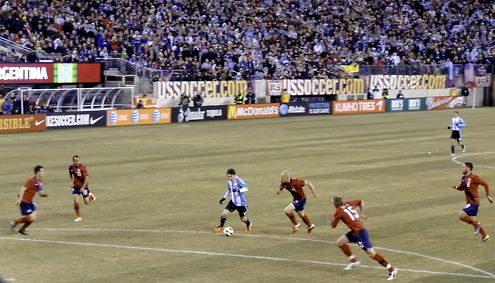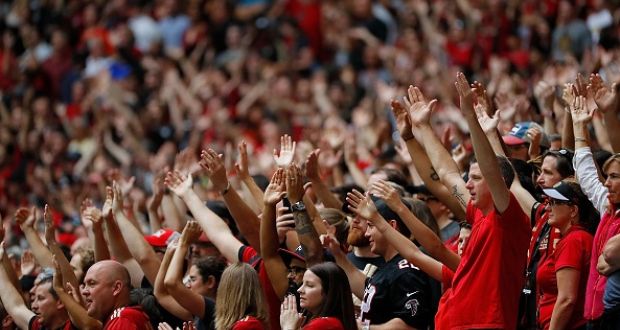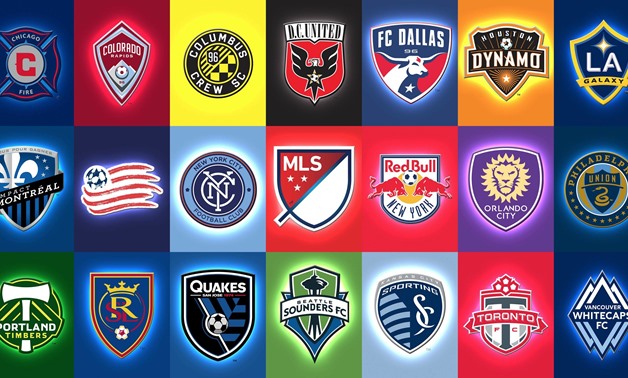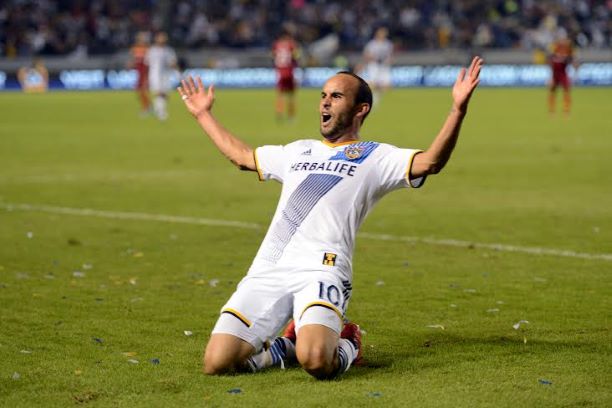Thought Trails: Copa América is coming to the United States in 2016. What does it mean?
Thought Trails: Copa América is coming to the United States in 2016. What does it mean?

Thought Trails: Copa América is coming to the United States in 2016. What does it mean?
“American fans would get to see the U.S. playing against teams like Argentina, Colombia, and Brazil in a tournament that matters. It’s huge, and shows some real 21st century thinking for the two regional federations to come together like this for the good of the game.” - Tom Mulroy
To celebrate 100 years of Copa América, the tournament is coming to the United States in 2016 with 16 nations representing North, Central and South America.
But what does it mean for the global game going forward?
Maxi: Although it may have seemed an inevitability, given the whisperings that preceded its announcement, today’s confirmation that the United States will host the 2016 Copa América marks a historic moment in the annals of not only American soccer, but of that of the entire continent. Just think about the possibilities! The US National Team taking on Argentina in New York, Mexico playing a full-strength Brazilian side in front of 100,000 fans in Los Angeles, or even Falcao and James Rodriguez wandering through a shopping mall in Minnesota! But before we high-five one another and wave flags through city streets, let’s talk a bit about the substance underlying the agreement. It would be an understatement to say that the American soccer community is excited, but does that hold true for the rest of the continent?
Eric: We can talk about growing the game and all the young faces that will be inspired by Neymar and Arturo Vidal, but let’s not glaze over the bigger picture: this tournament will make both CONCACAF and CONMEBOL an extraordinary amount of money. Not only will this be bigger than the Gold Cup and Copa América combined, but this geographical combination of cultures, languages, and demographics ticks off every box needed to create a global event. The venues will be massive. The presentation on television and online could be on par with the World Cup. As globalization causes borders to shrink, this move was nothing short of natural. Messi is now a household name in the states. Obviously, this Copa América Centenario is being presented as a unique celebration of the tournament’s 100 year history, but there is every reason to believe this format will become the norm.
Zack: I agree that this tournament represents a financial windfall and a potential shift in how international football is conceived and constructed; however, I think it’s important to view the fiscal opportunity and cultural advantages in symbiosis. To answer Maxi’s original point, this is exciting for everyone participating — whether we’re talking about players, fans, or executives. Here, you have a tournament that celebrates the sporting heritage of the Americas in its largest cultural hub, its most robust media network, and its most diverse nation. The tournament is being dropped into a unique environment where every team will already enjoy a large (and localized) base of support, thus creating not only a huge spectacle — but an extraordinarily unique one. If one of our prime and primal sources of enjoyment of a major international tournament is the intermingling of cultures that results from a summit of football, what better place to hold it than in this remarkable melting pot? In an era when so many try to show the manipulated and shallow nature of that metaphor — America as salad bowl — this tournament offers an amazing insight and showcase for its suitability.
On a footballing level, this tournament allows Americans to have a contextualization for how far we’ve come as a soccer nation — not just a referendum on our national team’s quality, but one on our football culture. World Cup ’94 was a utile measuring stick — but it’s time for a new one. And it also represents an exciting prospect for the rest of the football world — even those without a horse in this race — because it is another example of how the best of the international game can be created outside of a FIFA Executive Committee meeting. It’s easy to get ahead of ourselves when talking about the potential successes of this tournament, but, on paper, it looks great for both the everyman and businessman.
Maxi: Not to mention that those few niggling issues seem to be the sort that can be overcome, or at the very least, put up with for such a historic tournament. As of now, the tournament hasn’t been placed on the FIFA calendar, meaning that teams won’t be forced to release players. That said, given the machinations that go on behind these international tournaments, it’s safe to say that will be resolved. Besides that, the only major issue we’re looking at is a calendar of football that will be extremely congested, for not only that summer, but for a number of years. We’ll have a World Cup this summer, both a Gold Cup and Copa America in 2015, and then a Copa America, Euro and Olympic tournament in 2016, not to mention a Confederations Cup in 2017. If there’s a such thing as too much football, we’re certainly reaching that point. Should fans who focus on the club side of the sport have reservations?
Eric: Fans will always have reservations whenever their club’s stars step onto a pitch wearing a different shirt, and on this issue they’ll stand hand in hand with clubs. But the way negotiations seem to be heading, the huge financial influx that federations will receive is dependent on bringing the best players to the US of A. Clubs may rely on their best players, but South American stars can hardly turn down their countries. This is a historic tournament, not to mention one that almost all players will be excited about. Between exploring great American cities, collecting a nice paycheck, and playing in front of huge flocks of supporters, this tournament will be as enjoyable for players as they come. It may be too early to think about next steps, but if the Centenario is a tremendous success I wonder how Copa América plans to co-exist, or even if it should at all.
Zack: Who knows what direction this 2016 tournament goes in and what it leaves in its wake, but I do think we can already potentially highlight this edition with a real sense of demarcation. I feel as though international tournaments have been building up to a historic crossroads for some time. However Copa América Centenario takes shape, the discussions surrounding its establishment already feel like the logical product of some of the game’s biggest trends and points of discussion — and that’s exciting in and of itself. Whether it’s the pull of club versus country for player releases, the ever-expanding nature of regional tournaments (both geographically and in terms of number of teams), or the growing desire to find a way to (carefully) enfeeble FIFA’s grasp on the game, it seems like these dialogues have been a long time coming and are almost as exciting to me as what’s going to happen on the pitch. Here’s a question: What, as football fans who believe first and foremost in “growing the game” (whatever that may mean to you), do you think is the best thing that could come out of this?
Nathen: Growth is obviously the name of the game in North America, and this seems to be an extension of that trend. We talk about how intrinsic the growth of MLS is with the popularity of the sport as a whole, but it is much more rare an occurrence that we get a barometer such as this to measure ourselves against. There is no doubt that America has the demographic for this to be an unadulterated success, one that will surely be a focal point of the summer. However, is this effectively stealing a tournament from South American fans just to make some money? Is that not a worrisome way to ‘grow the game’? Especially since this could be classed as a fabrication of sorts with the ‘real’ Copa America one year before.
Eric: It’s undoubtedly a fabrication, but at what point does it become necessary? As the modern game has pushed forward, the world has only revolved around Europe more and more. The western hemisphere has incredible football to offer the world, and I think the primary benefit - beyond sheer dollar bills - is that increased visibility. The link to the United States makes Copa América more accessible to many, not just in America but also extending to Europe and Asia. Even if we accept that the Centenario will not be an authentic Copa América, there are many reasons to believe that this can enhance North and South American soccer on many levels. As for the idea of stealing this tournament from South American fans, I think it’s a little too early to make that leap. While the United States is an ideal destination for a tournament as big as this, it’s not implausible to assume that future tournaments could be hosted in Mexico, Argentina, or Brazil.
Nathen: In the ever more commercial world of international football, Europe has been running away with the money for quite some time. If this tournament can serve as a foothold for the western hemisphere to finally claim what is theirs, then I’m all for it. There are still a lot of unknowns, but I think all of us can agree this is a good thing. A major tournament with international clout on U.S. soil? Superstars in your backyard? A way to honor one of the world’s most prestigious tournaments? We’ll have all of that and more.
Maxi: And who knows, maybe we’re beginning to see the first signs of an era where Concacaf and Conmebol come together to more regularly represent the Americas. MLS teams in the Copa Libertadores? Boca Juniors playing New York Red Bulls in the Copa Sudamericana? They might have once seemed to be pipe dreams, but we’re definitely heading in an exciting direction.
Grab your flags and I’ll meet you all outside in five.
What are you thoughts on Copa América being celebrated by North, South and Central America with the Centenario? Follow Maxi, Zack, Nathen, and Eric. Comments below please.











